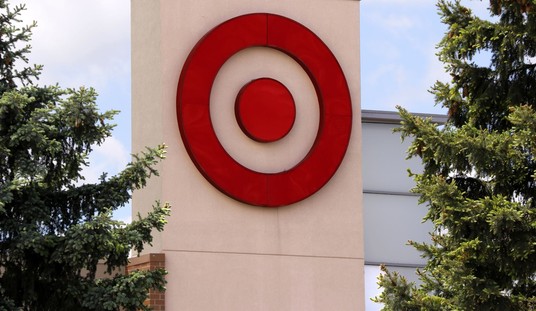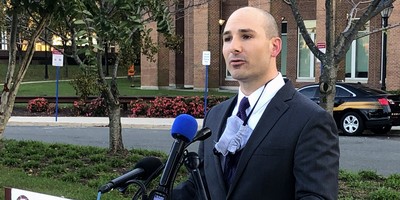The 2014 midterms brought an end to the Democratic majority in the U.S. Senate, but also ended the tech monopoly liberals had in elections.
After being pummeled by Democrats in this field in 2008 and 2012, Republicans decided it was time to stop letting the Democrats kick the stuffing out of them in voter outreach, targeting, and mobilization.
While still behind in some areas, Republicans are virtually caught up–and it showed.
Back in October, CNN reported on how Republicans were going to night school to learn the basics–and importance–of digital technology in modern elections, amongst other things:
Night after night, Republicans are going back to school in an effort to build a new army of communications operatives for the Twitter age.The courses at "Comms College" -- the GOP's secret training ground for social media-savvy communications staffers -- are taught in a sterile conference room on Capitol Hill. Students are instructed that the modern news cycle, fueled by the disruptive power of the web and constantly-filing reporters, has no patience for old political playbooks.
…
There's a session on opposition research and tracking, Facebook algorithms and Google metrics. There are also tips on dressing for television (no pocket squares, seersucker or dangly jewelry), and lessons on social media and partisan news sites that give campaigns the power to peddle their messages without the filter of "mainstream" reporters. Lockwood even has reading recommendations, including "Collision 2012," "The Victory Lab" and "Double Down."
Rob Lockwood, a veteran of the North Carolina Republican Party, spearheads the digital revamp of the RNC’s operations; folks call him “the dean.”
It was present in Georgia, where the Washington Post’s Ed O’Keefe documented the RNC outreach operations in the Peach State that proved successful; Democrat Michelle Nunn lost the senate race:
Recommended
Republicans here and across the country are now emulating the tech-driven, national-style ground game long dominated by Democrats. Party officials want to use the new methods to draw out voters to support congressional and gubernatorial candidates this year and then prepare to help the party’s presidential nominee during the 2016 election.…
In Georgia and other key states, the RNC partnered with state party operations to deploy paid staffers and millions of dollars in new databases, apps, Web sites and phone systems.
While they cannot coordinate with the GOP, the Post also noted that conservative organization, like Ralph Reed’s Faith and Freedom Coalition, was also engaging in revamping their micro-targeting and voter turnout operations of their own. So far, Faith and Freedom has a database of 33 million social conservatives from 21 million households.
To other more economic freedom-oriented groups, like Americans for Prosperity, they too have received credit for the “sophisticated” ground game they’ve executed to turn out voters.
In their memo on their operations, the RNC said they made 35 million new voter contacts, expanded the electorate, and deployed 30,000 volunteers to push them to victory across the board. And by expanding the electorate, they noted they found 2,450,747 “low-propensity” voters that they engaged early; it’s surely paid off.
The path to building our Republican Majority wasn’t easy. There were five key steps:
- Recruit top-notch candidates who could win within their states. Doing so after a tough 2012 election cycle wasn’t easy.
- Convince supporters and donors that this time was different and the mistakes of the past would not be repeated.
- Properly navigate potentially problematic primaries.
- Modernize digital, data and turnout operations to be competitive.
- Expand the map into purple and blue states AND defeat more than three Democratic incumbents in a single cycle—something that hasn’t been done since the Reagan landslide in 1980.
It certainly paid dividends, especially in North Carolina.
What about the Democrats and their election operations?
It wasn’t entirely a failure. In fact, turnout in key senate races was actually more favorable to Democrats than in 2010. Democratic turnout in North Carolina was much better this year than in 2010, but it was not enough to hold back the Republican wave that broke on Nov. 4. Then again, “much better” should be taken with a grain of salt; Democratic turnout in North Carolina was at its lowest since 1984.
The main problem for Democrats was their inability to reach out, persuade, and mobilize white, working class voters (via NYT):
What we can say is that Democratic candidates like Kay Hagan, Bruce Braley, Michelle Nunn and Mark Udall lost because they failed to win the support of enough white, older, rural and working-class voters.…
Turnout was, of course, far less favorable for Democrats than it was in 2012. But it is preposterous to suggest that Democratic field efforts could produce an electorate that was anywhere near as young or diverse as the one that re-elected Mr. Obama two years ago. If Democratic candidates like Ms. Hagan, Ms. Nunn, Mr. Braley and Mr. Udall needed a 2012-type electorate to win, then they were doomed from the start.
Matt Bai wrote how it was premature for Democrats to speak about a sustained Democratic majority after their 2008 win; it was really an Obama surge, not a Democratic one:
Thinking that the Democratic Party could simply absorb Obama's appeal among new voters was as misguided as thinking that a record label could somehow inherit Taylor Swift's fan base and use it to catapult every other artist on the list to stardom.
Yet, he does mention that the electorate is moving towards a more left-leaning direction, but noted that in the end; it’s all about the candidate.
Republicans are hell-bent on preventing another Todd Akin from emerging, so a day after a red wave swept Harry Reid out as Senate Majority Leader; Time posted a story of how Republicans gaffe-proofed their candidates. Candidates recollected stories of these crazy liberal trackers in the offices of the National Republican Senatorial Committee, where Sen. Rob Portman of Ohio, NRSC Finance Chairman, finally spilled the beans: they were targeted by them.
It was a covert way to see how this crop of candidates would react to the most wild, and annoying, liberal tracker that would inevitably be unleashed against them as Election Day grew closer.
The NRSC also looked into every aspect of their lives, financial records, Facebook profile pages, and other areas where potentially damning evidence could sink a campaign.
The piece also said that they showed candidates what issues were the most important to voters, and how NOT to respond to trackers by showing them blooper reels of candidates who gave inappropriate answers. NRSC Political Director, Ward Baker, said “[We] ran them through the ringer.”
As Republicans continue to celebrate their victory, they should keep in mind that Democrats are going back to the drawing board just as they did in 2012.























Join the conversation as a VIP Member